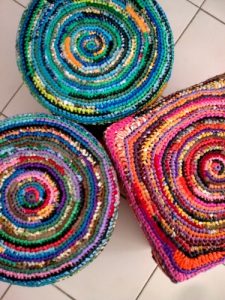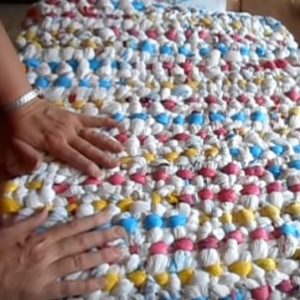Low Density Polyethylene (LDPE) is softer, smooth and shinier than HDPE, and slightly elastic so it is not as strong. It is less dense because of the increased space between the few branches that form during polymerisation, which makes it more flexible. LDPE also has better clarity than more dense polyethylene materials, so it can be used as a packaging option that lets consumers easily see what’s inside. And, LDPE is easy to tear, which is a strength when packaging needs to be easy to open.
It’s not always easy to be able to identify the different types of plastic bags. Here are a few others for comparison:
HD/LD Blend
- A blend that combines the benefit of both polymers.
Co-Extruded poly (Co-ex)
The layering of two or more layers of polythene during the extrusion process. The inside could be HD and the outside LD, or vice versa. The result – a matt side for the HDPE and a glossy side for the LDPE, to add interest and strength to the overall effect – often to be seen in polythene mailing sacks.
High Density (#2 HDPE)
- Supermarket bags, recognisable by its distinctive rustling sound. Although brittle, HDPE is ideal for carrying heavy loads
Polypropylene (#5 PP)
- Cereal box bags (unless they tear like paper)
Other flexible plastic packaging (#7 other)
Some films are are made with an extra polymer layer, makes them non-recyclable such as:
- Crinkly salad bags
- Frozen food bags
 Recycling
Recycling
Technically LDPE bags can be recycled, but as they are made of lightweight plastic film, collection is difficult. Often, when materials have a low recycling rate, it is actually the collection of the material that is the problem rather than the recycling process. For carrier bag recycling to be successful, it requires special collection points which allow for the bags to be collected in bulk. Many large supermarkets will have a special bin for carrier bags near the entrance of the store.
Most retailers collect clear LDPE from their back-of-store waste when they unwrap pallets and boxes. This stream of plastic can be recycled due to its colour and cleanliness, and is sent for recycling into bin liners and other films.
Source

 Recycling
Recycling






